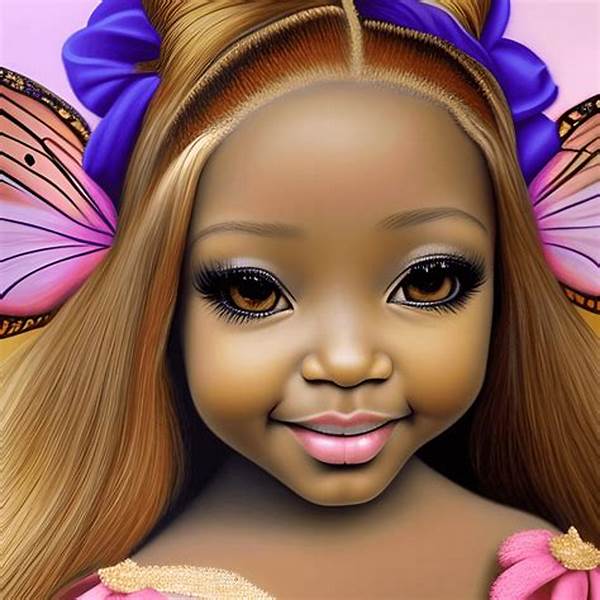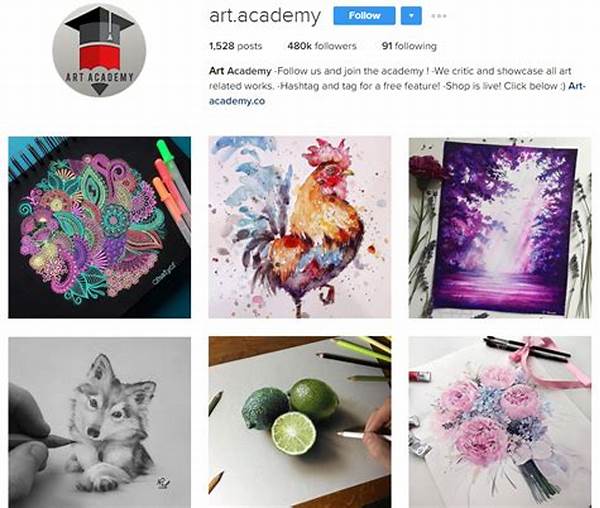The art of portrait painting has captivated audiences for centuries, with artists striving to capture the essence of their subjects with brushstrokes that breathe life onto the canvas. Lifelike realism in portrait painting stands out as a remarkable achievement, marrying technical skill with an acute ability to see beyond the surface. This style challenges artists to capture not only the physical likeness but also the spirit and character of the individual, offering viewers a window into the very soul of the subject.
Read Now : Cultivating Creativity Using Visual Arts
The Evolution of Lifelike Realism
Lifelike realism in portrait painting has evolved through the ages, reflecting changes in technique, culture, and perception. During the Renaissance, artists like Leonardo da Vinci began to experiment with anatomical accuracy and perspective, laying the groundwork for future generations. As the art world shifted and developed, so too did the approaches used by portrait artists. In the 19th century, Impressionists sought to infuse their subjects with light and emotion, while still paying homage to realism. Today’s contemporary artists leverage technology and new materials to push boundaries even further, ensuring that lifelike realism remains a dynamic and evolving field of study. Portraits today can capture a subject with unprecedented detail and emotional depth, thanks to a confluence of traditional skills and modern innovation.
Characteristics of Realism
1. Detail and Precision: Lifelike realism in portrait painting emphasizes capturing the smallest details, allowing for highly accurate and precise depictions.
2. Emotional Depth: Beyond physical likeness, this style conveys the emotions and personality of the subject.
3. Historical Influence: It draws heavily from historical techniques, integrating past knowledge with modern advancements.
4. Lighting and Shadow: Effective use of lighting and shadow is crucial in creating depth and realism.
5. Textural Variety: Artists master various textures, from skin to fabric, to enhance the lifelike quality.
Techniques in Lifelike Realism
Artists working to achieve lifelike realism in portrait painting employ a combination of traditional and innovative techniques. Mastery of drawing lays the foundation, with precise line work and understanding of form being critical components. Layering is another key technique; paint is meticulously built up in layers, each one contributing to the final depth and richness of the portrait. Glazing, a method where thin layers of paint are applied over one another, creates a luminous effect that enhances realism. Furthermore, attentive observation of the subject, paying particular attention to facial expressions and minute details, allows artists to transcend mere replication and achieve true lifelike realism.
Read Now : Social Media Sites For Artists
Contemporary Masters of Realistic Portraiture
In the realm of lifelike realism in portrait painting, several contemporary artists have distinguished themselves with their exceptional skills. They bring fresh perspectives and spark interest in this timeless genre. Their works often transcend mere representation and evoke deep contemplation. Artists like Chuck Close, known for his large-scale, meticulous portraits, and Alyssa Monks, whose innovative use of water and texture captivates audiences, are at the forefront of this movement. Such artists push the boundaries of realism, introducing elements of abstraction and emotion that invite viewers to explore the nature of human identity anew. By embracing both the past and present, these masters of realistic portraiture continue to evolve the genre, ensuring its relevance in the modern art landscape.
The Emotional Connection in Realism
The true power of lifelike realism in portrait painting lies in its ability to forge an emotional connection with the viewer. By capturing the subtleties of expression and nuance, artists create portraits that speak volumes without uttering a single word. This connection is built upon a foundation of trust between the artist and the viewer, a shared understanding of what it means to be human. As viewers gaze upon these paintings, they are drawn into an intimate dialogue with the subject, piecing together the story conveyed through each brushstroke. The resulting engagement beckons viewers to reflect on their emotions, fostering a sense of empathy and understanding that transcends time and space.
The Artist’s Journey
Creating lifelike realism in portrait painting is an artist’s journey of discovery and growth. The process demands not only technical prowess but also an openness to explore and understand the human condition. As artists hone their craft, they learn to see beyond the superficial and delve into the intricacies of their subjects’ lives. Each portrait becomes a new chapter in this ongoing narrative, a testament to the artist’s evolution and dedication. Through their work, artists invite viewers to embark on their own journey of exploration, offering a glimpse into the complexities that define human existence and the beauty that lies within it.
Conclusion: The Future of Lifelike Realism
In summary, lifelike realism in portrait painting continues to thrive as a powerful artistic endeavor that captivates both artists and viewers alike. This style has maintained its allure through its ability to convey authentic human experiences and emotions, transcending traditional boundaries. As technology advances and artists continue to innovate, the future of lifelike realism holds exciting potential. New materials and techniques will undoubtedly emerge, enhancing the depth and emotion conveyed in portraits. This ongoing evolution ensures that lifelike realism remains a vital and dynamic component of the art world, poised to inspire and engage future generations. Ultimately, it is the enduring quest to capture the essence of humanity that ensures lifelike realism in portrait painting will remain a cherished and celebrated form of expression for years to come.



